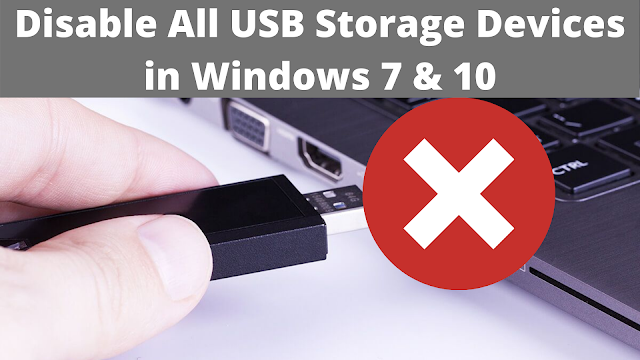

- #Disable mass storage device windows 10 portable#
- #Disable mass storage device windows 10 pro#
- #Disable mass storage device windows 10 software#
Since USB devices are portable and can be connected easily to the computers these devices pose very real security threats. You can restrict or block access to USB drives using Device Control profile in Intune (Endpoint Manager).īy creating the Endpoint Security Device Control Profile in Intune, you can define the settings to block the USB device access. If you are stuck or need some help, comment below and I will try to help as much as possible.This article covers the steps to block removable storage using Intune.

If you want to revert back, follow the same steps but type “3” in the Value data field in step four. After restarting, the USB ports will be disabled. Once you’ve done all that, close the Registry Editor and reboot Windows to apply changes. In the value data field, type “ 4” and click on the “ Ok” button to save changes.ĥ. The above action will open the Value properties window. Once you are here, on the right panel, find a value named “ start” and double-click on it.Ĥ. HKEY_LOCAL_MACHINE\SYSTEM\CurrentControlSet\Services\USBSTORģ. Doing that will take you to the “ USBSTOR” folder. After opening the Registry Editor, copy the below path, paste it in the address bar and press Enter.

This action will open the Windows Registry Editor.Ģ. Open the Start menu, search for “ Registry Editor” and click on the result. Before proceeding, back up the registry so as to be safe in case anything goes wrong.ġ. Windows Home users can use the Registry Editor to disable USB ports. If you want to reverse the process, select “Not configured” or “Disabled” in the policy properties window for all three policies. Once you reboot the system, all the USB ports will be disabled.

After modifying all three policies, reboot Windows to apply the policy changes. Do the same thing for the other two policies “ Removable disks: deny read access” and “ Removable disks: deny write access“.ĥ. In the properties window, select the “ Enabled” radio option and click on the “ Ok” button to save changes.Ĥ. Once you are here, on the right panel, find and double-click on the “ Removable disks: deny execute access“.ģ. Once opened, expand the folder structure on the left panel and go to the following location.Ĭomputer Configuration → Administrative Templates → System → Removable Storage AccessĢ. First, open the Group Policy Editor by searching for “ Edit group policy” in the start menu. If you are using Windows Home edition, follow the second method.ġ.
#Disable mass storage device windows 10 pro#
Note: The steps shown are only applicable to Windows Pro and Enterprise versions. Once those two things are blocked, the USB storage devices are essentially disabled. Well, not necessarily disabled outright but blocks the read and write access. To make things easier, Windows has a dedicated Group Policy Object that disables the USB ports. Device Manager method 1] Disable USB Ports in Windows via GPO.
#Disable mass storage device windows 10 software#
This is because you are not disabling the hardware itself but putting simple yet affective software restrictions. Note: Once you disable USB ports in Windows, you will not able to use them only as long as Windows is running. For these kinds of cases, Windows has some options to fully disable USB ports. This is especially important for work environments. Mainly because you don’t want users attaching USB drives and transferring or reading data without authorization. As good as it is, there will be situations where you need to block all USB ports in Windows.


 0 kommentar(er)
0 kommentar(er)
